Gunung Kawi
Tags : Temple
Timings : 7:00 AM - 5:00 PM
Time Required : 2-3 hours
Entry Fee : IDR 15,000
Ways to Experience this attraction
Gunung Kawi Sebatu Temple, Bali Overview
One of Bali's least visited temple complexes, Gunung Kawi Sebatu Temple is a beautiful water temple located in Tellalang, Gianyar. Featuring lotus ponds surrounded by greenery, the temple also houses a water garden where the statue of Goddess Saraswati is kept. A split Candi Bentar gate takes leads you to the carved shrines inside.
Gunung Kawi can be found in the region of Tampaksiring. There are 10 shrines called 'candi, some towering more than 23 feet in height, sheltered by the cliff face. It is one of the oldest ancient landmarks in Bali. To reach the temple, you must climb down to the valley below, traversing through beautiful fields of rice paddy.
In 2012, Gunung Kawi was part of the Balinese 'Subak' irrigation system that was granted UNESCO World Heritage status. Because of the cliff acting as a shelter, these shrines have been well-preserved through the years despite Bali’s tropical climate. The complex remains an important source of holy water for Hindu Balinese rites, as they believe the Pakerisan River’s water becomes holy on crossing the complex.

Read More on Gunung Kawi Sebatu Temple
Things to Do
Shrines at Gunung Kawi
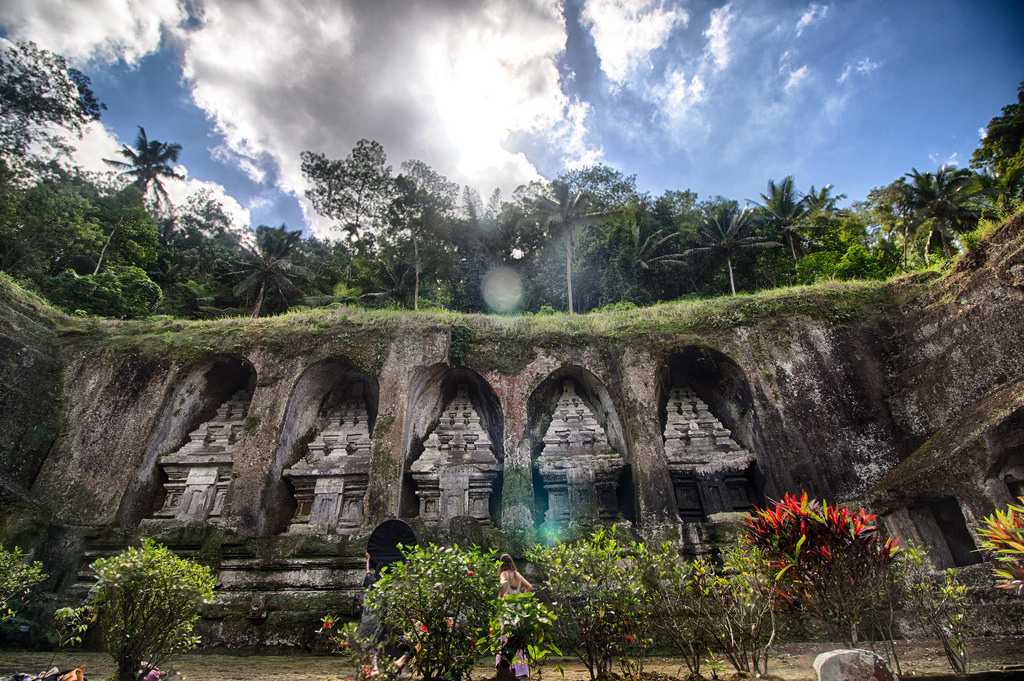
This complex is not a religious place rather, it is comprised of sacred funeral monuments.
To the east are five shrines supposedly dedicated to King Udayana, his queen Mahendradatta, and their sons Airlanga, Anuk Wungsu and Marakata.
To the west are shrines dedicated to the king’s concubines, though some theories suggest they are his other wives or minor queens.
Legend has it that these candis of Gunung Kawi were constructed by King Wungsu in honour of his father, the great Udayana of the Warmadewa Dynasty (for whom Udayana University is named). King Wungsu was the ruler of Bali while his brother Airlanga was king of Singosari in eastern Java. It is considered that Gunung Kawi is Bali’s answer to Egypt’s Valley of the Kings, but it is highly unlikely that these shrines contain actual remains of the royal family.
Gunung Kawi Complex
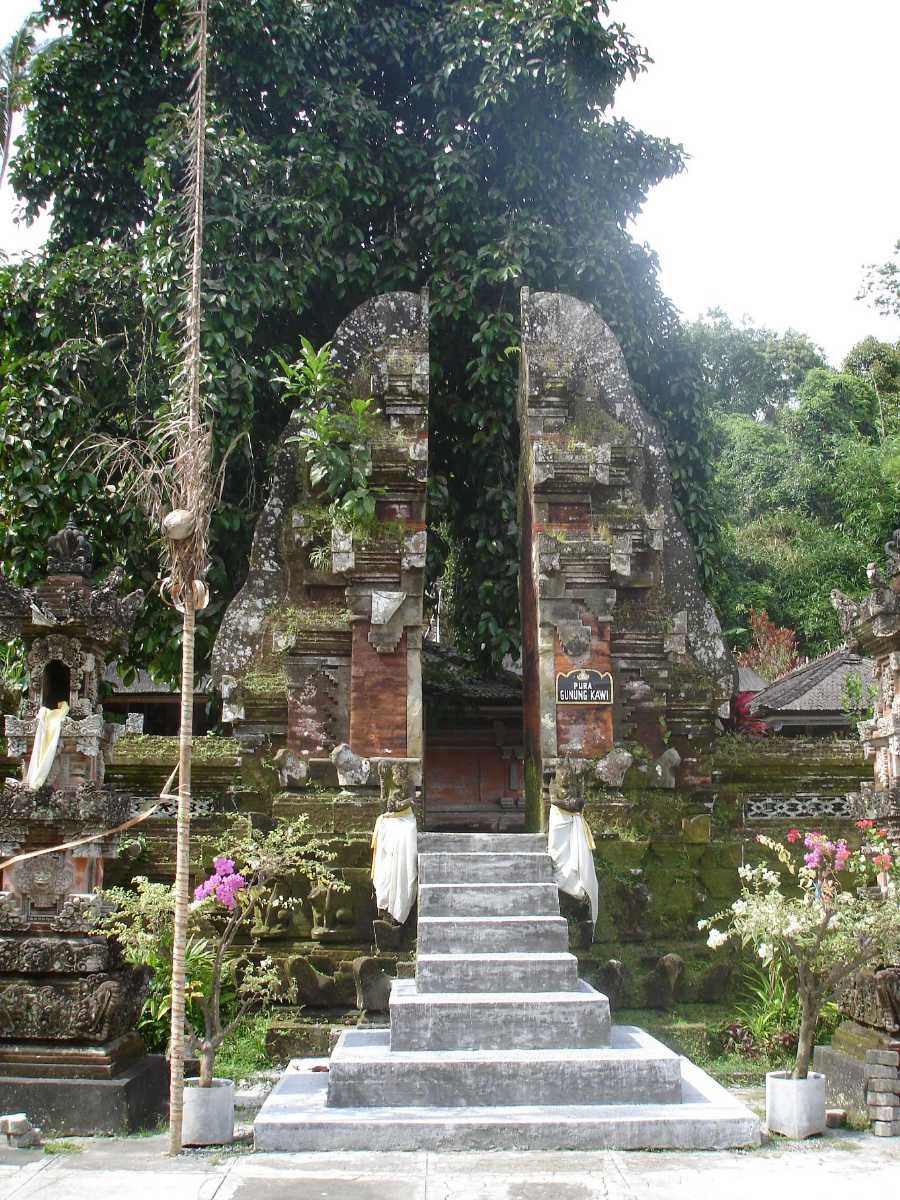
The main site opens with 10 seven-metre high shrines carved into the rocky hills. There are four on the west side and five on the eastern side, and another hidden shrine to the south. All the while, you can overlook the sacred Pakerisan River flowing alongside. On the other side of the river is a courtyard with Hindu shrines.
The Gunung Kawi complex has three groups of reliquaries – lime shrines (dedicated to King Udayana and Anak Wungsu), empat shrines (dedicated to mistresses of Anak Wungsu) and the final reliquary (dedicated to the prime minister of Anak Wungsu’s reign).
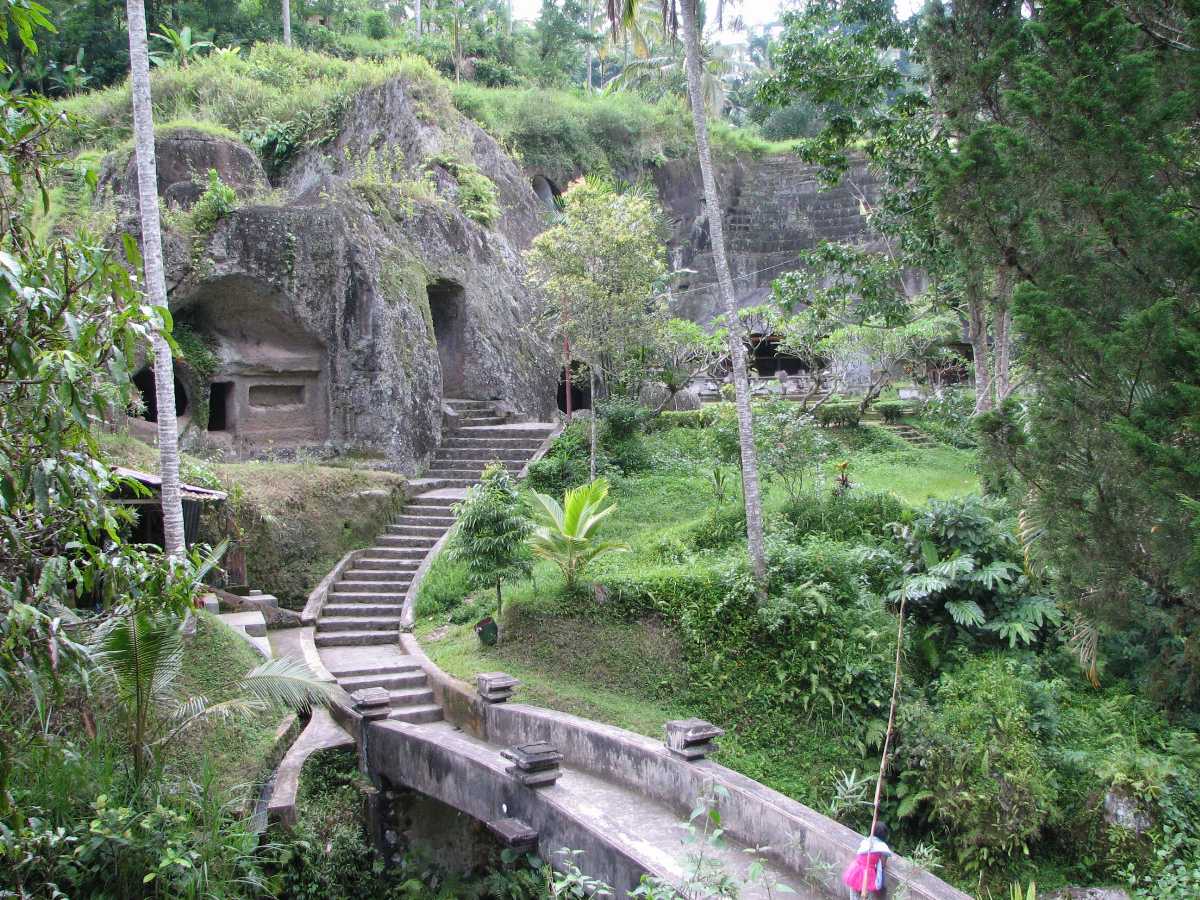
Paddy Fields Near Gunung Kawi
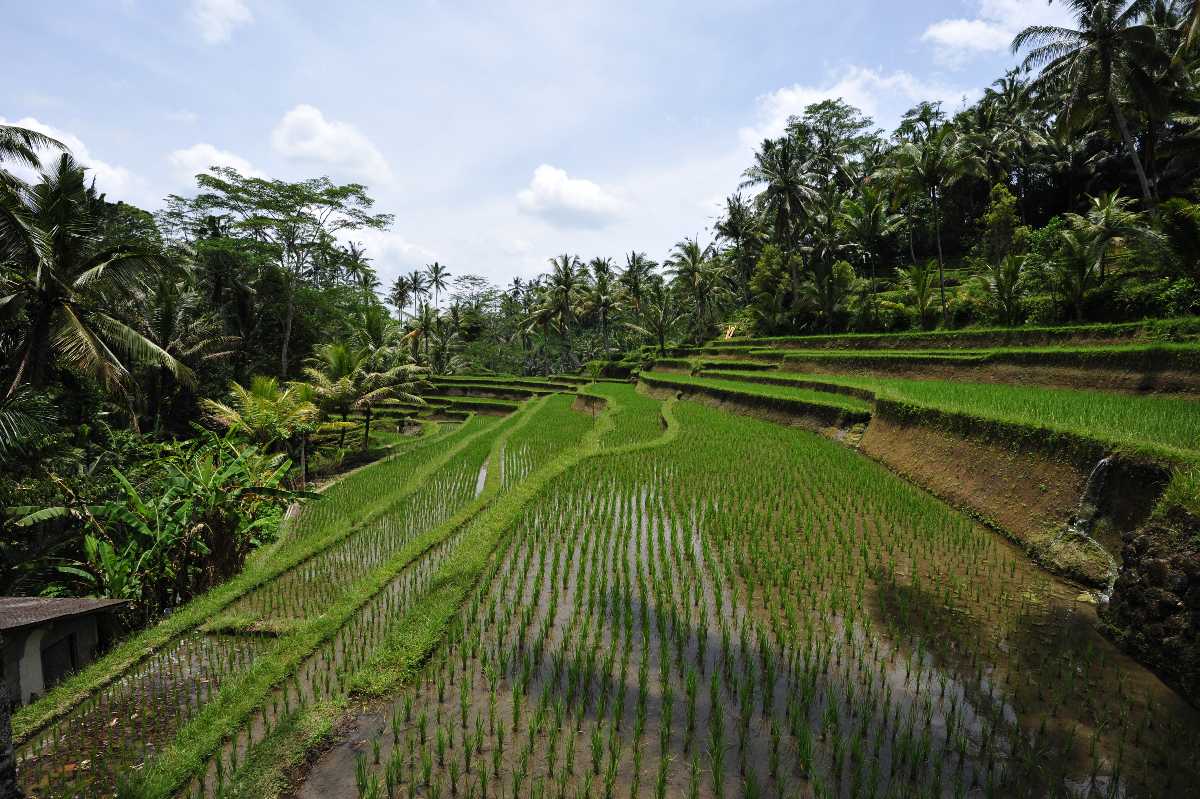
Just a few hundred metres east of the Tampaksiring main route is a paved walkway lined with art shops and warungs. Further down, once you reach a distance when the parking lot starts to fade away, the path through paddy fields begins.
There are hundreds of stairs to cross, and when they eventually end, you will find a stone archway. Here, you are expected to use the earthen vases of water to sprinkle yourself before entering the Gunung Kawi complex.
Tips
- If you’d like to buy souvenirs, there are stalls in a line along with the steps down to the site. Most of them are generic souvenirs that you can find at most shops, but if you dig hard enough, some sell very creative items. Best of all, the prices here are lower than shops in Ubud or other parts of the island.
- Don’t forget that entry to the complex is charged! It is IDR 15,000 for adults and IDR 7,500 for children. Parking at the site costs IDR 2,000.
- The best time to visit Gunung Kawi is early in the morning or late in the afternoon to avoid the glaring Bali sun, and subsequently, crowds of tourists.
Dress Code
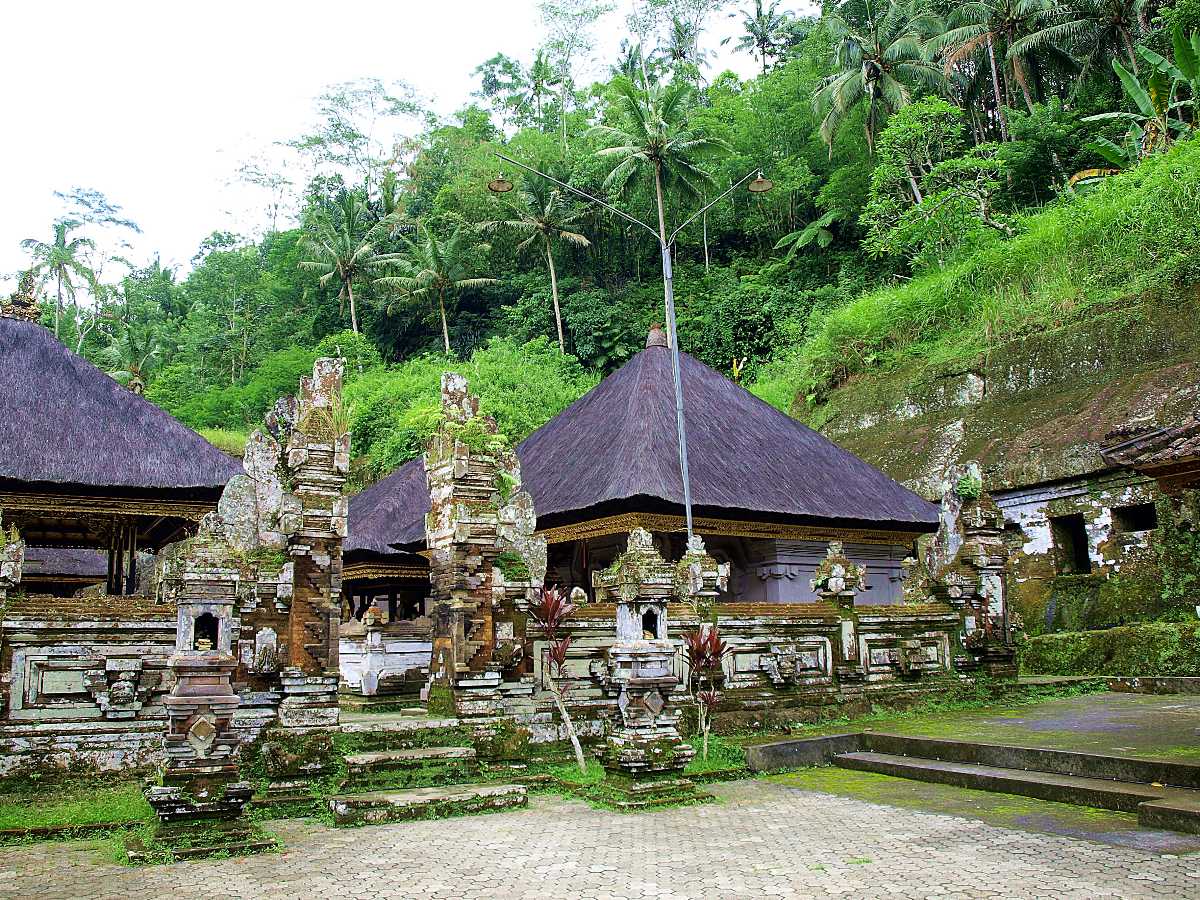
How To Reach Gunung Kawi
- Gunung Kawi can be found in the region of Tampaksiring, a plateau area with rice fields and greenery on all sides.
- Gunung Kawi is around an hour and 45 mins from Nusa Dua and an hour and a half's drive from Denpasar and Kuta.
- Closer is Ubud that is just half an hour away.
- Because of this location towards the centre of the island, a day trip can be made to Gunung Kawi from almost anywhere on the island.
- You can rent a taxi, a local mini-bus (called bemo) or rent a car/ scooter.
- A trip from Ubud to Gunung Kawi is generally priced at around IDR 1,50,000 round trip, and the driver waits while you explore the area.
- Less than 2 kilometres away is Tirta Empul, a holy water temple that is equally fascinating to explore.